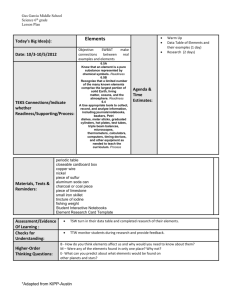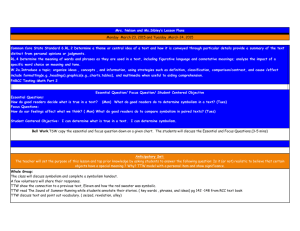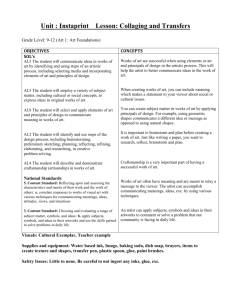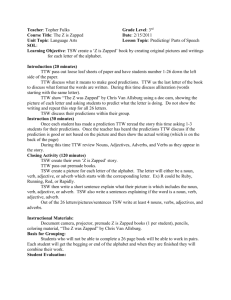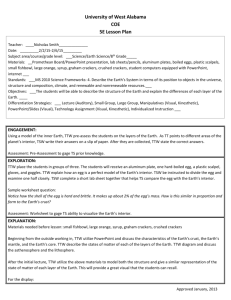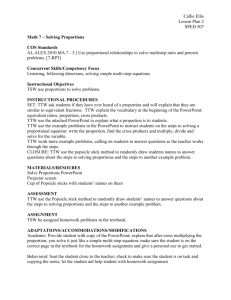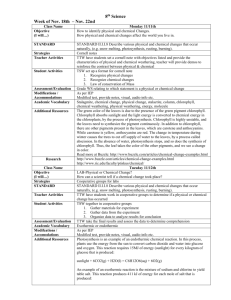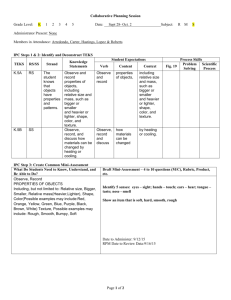The Expanding Universe
advertisement
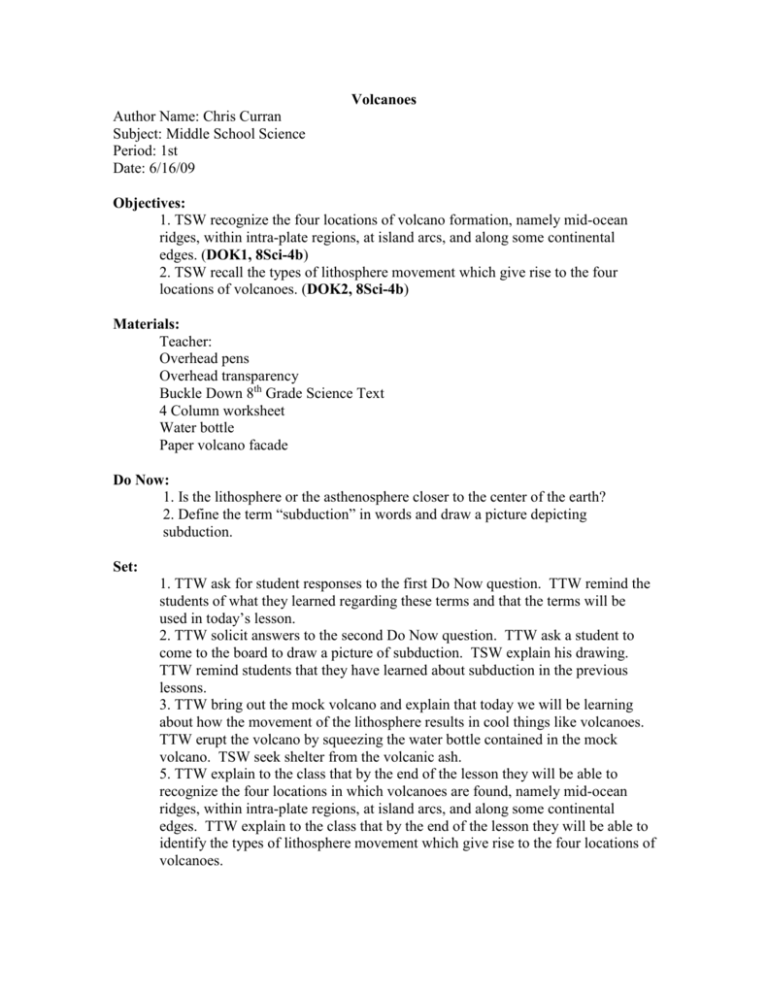
Volcanoes Author Name: Chris Curran Subject: Middle School Science Period: 1st Date: 6/16/09 Objectives: 1. TSW recognize the four locations of volcano formation, namely mid-ocean ridges, within intra-plate regions, at island arcs, and along some continental edges. (DOK1, 8Sci-4b) 2. TSW recall the types of lithosphere movement which give rise to the four locations of volcanoes. (DOK2, 8Sci-4b) Materials: Teacher: Overhead pens Overhead transparency Buckle Down 8th Grade Science Text 4 Column worksheet Water bottle Paper volcano facade Do Now: 1. Is the lithosphere or the asthenosphere closer to the center of the earth? 2. Define the term “subduction” in words and draw a picture depicting subduction. Set: 1. TTW ask for student responses to the first Do Now question. TTW remind the students of what they learned regarding these terms and that the terms will be used in today’s lesson. 2. TTW solicit answers to the second Do Now question. TTW ask a student to come to the board to draw a picture of subduction. TSW explain his drawing. TTW remind students that they have learned about subduction in the previous lessons. 3. TTW bring out the mock volcano and explain that today we will be learning about how the movement of the lithosphere results in cool things like volcanoes. TTW erupt the volcano by squeezing the water bottle contained in the mock volcano. TSW seek shelter from the volcanic ash. 5. TTW explain to the class that by the end of the lesson they will be able to recognize the four locations in which volcanoes are found, namely mid-ocean ridges, within intra-plate regions, at island arcs, and along some continental edges. TTW explain to the class that by the end of the lesson they will be able to identify the types of lithosphere movement which give rise to the four locations of volcanoes. Procedure: 1. TTW present notes on the overhead projector. The notes will outline the four locations of volcanoes. 2. TSW take notes on the material presented. TTW guide the student in his note taking to ensure that organized notes are taken. 3. TCW discuss the material taken during the notes. TTW resolve any misconceptions. 4. TTW allow the students to use the Buckle Down text to explore the movement of the lithosphere for the four locations of volcanoes. TSW fill out a 4 columned chart with information about each type of lithosphere movement. 5. TSW teach the rest of the class how the lithosphere moves to give rise to the four locations of volcanoes. TTW correct misconceptions as the student teaches. 6. TTW review the movement of the lithosphere that was taught by the student. Closure: 1. TTW remind the student of the lesson’s objectives. 2. TTW ask a student to remind the class of the four locations of volcanoes. 3. TTW describe a movement of the lithosphere and ask the student to determine which location of volcano would be formed. 4. TTW explain that in the coming lessons TSW learn about Pangaea. TTW remind the student that a formal evaluation will be taking place following the lesson on Pangaea. Assessment/Evaluation: Objective: TSW recognize the four locations of volcano formation, namely midocean ridges, within intra-plate regions, at island arcs, and along some continental edges. (DOK1, 8Sci-4b) Assessment: Informal: 1. TTW listen to students (M) explain their answers to questions posed in class regarding location of volcanoes, namely mid-ocean ridges, within intra-plate regions, at island arcs, and along some continental edges (C). Formal: 1. TSW answer questions on the end of the unit assessment (M) which address the location of volcanoes (C). The grade will be recorded in the grade book (D). Objective: TSW recall the types of lithosphere movement which give rise to the four locations of volcanoes. (DOK2, 8Sci-4b) Assessment: Informal: 1. TTW listen to students (M) explain their answers to questions posed in class regarding the way in which lithosphere movement gives rise to the four locations of volcanoes (C). 2. TTW observe the students (M) filling out the 4 column chart on the way in which lithosphere movement gives rise to the four locations of volcanoes (C). 3. TTW observe the students teaching (M) the way in which lithosphere movement gives rise to the four locations of volcanoes (C). Formal: 1. TSW answer questions on the end of the unit assessment (M) which address regarding the way in which lithosphere movement gives rise to the four locations of volcanoes (C). The grade will be recorded in the grade book (D).
